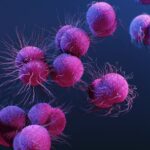
Formula for T-Score
Welcome to our comprehensive guide on the formula for calculating T-Scores. Whether you’re a student, researcher, or simply interested in statistics, understanding the T-Score formula is essential. In this article, we will explore the concept of T-Scores, their significance, and how to calculate them.
Table of Contents
What is a T-Score?
A T-Score is a statistical metric used to interpret and standardize data by measuring how far a data point is from the mean, relative to the standard deviation. It helps in determining the probability of a data point occurring within a particular distribution. Essentially, the T-Score allows us to compare different data points and identify outliers or extreme values.
Calculating T-Scores
The formula for calculating a T-Score is as follows:
T-Score = (X – μ) / (σ / √N)
Where:
- X represents the data point for which we want to calculate the T-Score.
- μ is the mean of the data set.
- σ is the standard deviation of the data set.
- N is the sample size.
The T-Score formula utilizes the concept of standard deviation, indicating how much the data points deviate from the mean. The denominator in the formula represents the standard error, which helps account for the sample size, ensuring accurate comparisons between different samples.
Interpreting T-Scores
T-Scores follow a standard normal distribution, resembling a bell curve. By comparing a T-Score to this distribution, we can determine the probability of a data point falling within a specific range.
In general, T-Scores can be interpreted as follows:
- A T-Score of 0 indicates that the data point is exactly at the mean.
- A positive T-Score indicates that the data point is above the mean.
- A negative T-Score indicates that the data point is below the mean.
The further a T-Score deviates from 0, the more significant the difference between the data point and the mean. Extreme T-Scores may suggest outliers or unique values within the data set.
Examples
Let’s consider an example to illustrate the application of the T-Score formula. Suppose we have a sample of exam scores in a class of 30 students where the mean is 75 and the standard deviation is 10. To calculate the T-Score for a specific student who scored 85, we can plug the values into the formula:
T-Score = (85 – 75) / (10 / √30)
By solving this equation, we find that the T-Score for the student who scored 85 is 3.87.
Conclusion
The formula for T-Score is a fundamental statistical tool that allows you to standardize and compare data points. By understanding this formula, you can gain insights into the distribution of data and identify exceptional or extreme values. Remember, the T-Score formula depends on the mean, standard deviation, and sample size. Apply this knowledge wisely to make informed decisions in various fields such as education, research, and data analysis.
With this comprehensive guide on the formula for T-Score, we hope you have gained a clear understanding of its significance and calculation process.


